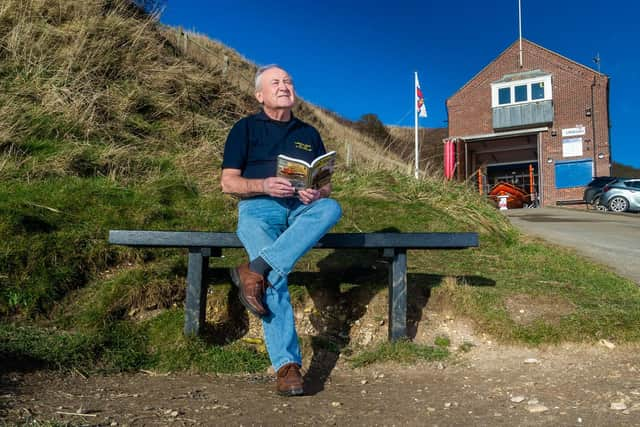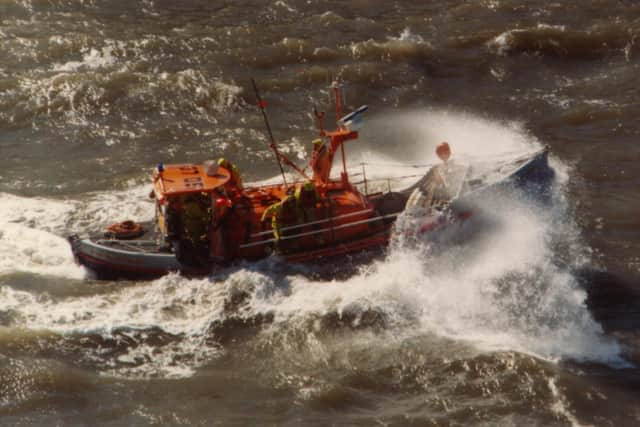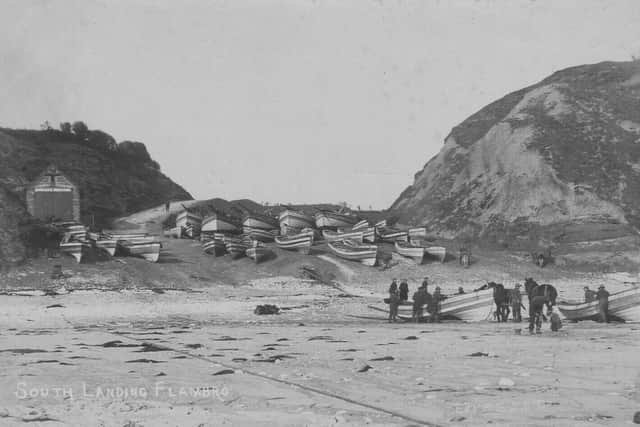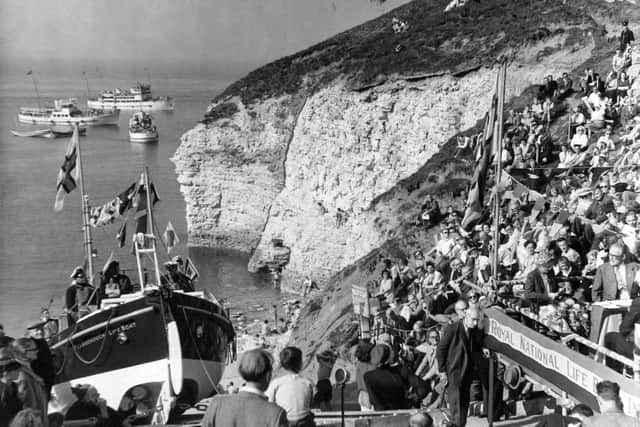New history of lifeboat stations at Flamborough recounts triumphs and tragedies at sea
But Flamborough Head, a sailor’s landmark since time immemorial, has “always been a graveyard for ships”.
Despite the building of two lighthouses, the first in the 17th century and the second by Trinity House in 1805, shipwrecks regularly occurred with dreadful loss of life.
Advertisement
Hide AdAdvertisement
Hide AdBut it took one of worst maritime disasters on Yorkshire’s coast to provide the impetus to set up two lifeboat stations.


A new book chronicling their history from 1871 to 1993 by Paul L Arro, a volunteer lifeboat treasurer at Flamborough for the past three decades, is a fascinating read for anyone interested in maritime history.
Bridlington Bay, known as the Bay of Safety to mariners, was anything but on February 10, 1871 to the crews of a huge fleet of small boats, many carrying coal from the Tyne, who were sheltering there when a gale blew up forcing them on shore, where the vessels broke up.
Some of the sailors drowned within shouting distance of people on land who tried in vain to attempt rescue.
Advertisement
Hide AdAdvertisement
Hide AdThe new book, Safe within the Lifeboat, tells how during the gale, Flamborough fishermen bravely sprang into action to try and save the crews of the Arrow.


Some 30 vessels in all were lost along with 70 fishermen and six lifeboatmen from Bridlington. Much of the coal the colliers were carrying was washed ashore and afterwards “the sea ran black for many weeks”.
The rescue of the Arrow led to the two stations being opened that November – one at North Landing and the other at South Landing – allowing crews to launch from one side if a gale was making it impossible on the other.
The book records stories of heroism, but also the occasional tragedy, as lifeboats were launched to local cobles, deep-sea trawlers, merchant vessels and visitors in need of help.
Advertisement
Hide AdAdvertisement
Hide AdOne rescue was that of 15 men from the Grimsby-bound trawler Lord Ernle, returning from the White Sea, which ran ashore at the foot of 400ft cliffs at Bempton in dense fog late on March 2, 1937, in a heavy swell.


Nearly 50 men went up to their chests in water to launch the lifeboat, to get to the trawler, which was down by the stern, and being pounded by heavy seas.
At one point the lifeboat was flung onto the deck, but all the crew was rescued.
Mr Arro said: “I hope I have done justice to the crews and the many rescues they carried out.
Advertisement
Hide AdAdvertisement
Hide Ad“I have worked alongside some amazing and dedicated lifeboat people over the years who have been committed to the Flamborough Lifeboat Station.


“The dedication and bravery shown by the volunteer lifeboat crews from the first establishment of the two stations in 1871, with pulling and sailing lifeboats, right through to the present day and the modern fast Atlantic 85 lifeboat must be admired.”
The last all-weather lifeboat left North Landing in 1993 after its redesignation as an inshore lifeboat station.
Its current crew of 17 includes just four fishermen whereas in the past they predominantly made up the numbers.
Advertisement
Hide AdAdvertisement
Hide AdAny profit from the sale of the book, which has 75 photographs, is being donated to the station. Copies of the book, price £12.99, plus £3.50 post and packaging, can be purchased direct from the author.
Email [email protected].
Comment Guidelines
National World encourages reader discussion on our stories. User feedback, insights and back-and-forth exchanges add a rich layer of context to reporting. Please review our Community Guidelines before commenting.